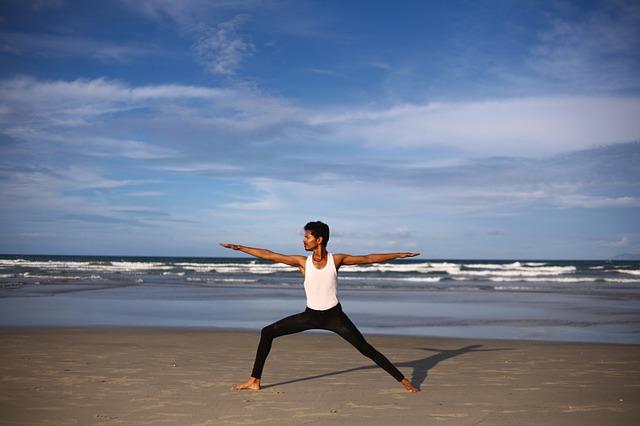Health and Wellness Blog
Pelvic Imbalance during Pregnancy
At Hayes Family Chiropractic, we are dedicated to the success of your pregnancy!
Chiropractic is an excellent option for keeping the mother’s body in a state that is conducive to the healthy development of a child. In this way, we increase the likelihood of an easier pregnancy and a safer birth. To demonstrate this point, misalignment of the pelvis is responsible for a host of complications in pregnancy.
Misalignment of the pelvis and pregnancy
Pelvic misalignment occurs when the woman’s body releases pregnancy hormones that relax ligaments to make way for the passage of the child. At the same time, the added weight of the child shifts the woman’s center of gravity downward and adds more weight (and thus pressure) onto the destabilized spine, shifting it out of alignment. This is responsible for a lot of the back pain that is considered synonymous with pregnancy.
Prenatal Chiropractic in Dunedin
If you are on your way to having a baby, we say congratulations!
At Hayes Family Chiropractic, we have three goals when it comes to this life-changing experience: to make the process as comfortable as possible for the mother, to give the process the greatest chance of success without complication, and to foster a nurturing environment for the child to develop. We offer non-invasive support for the mother’s body during a time of great physical upheaval.
Chiropractic treatment during pregnancy in Dunedin:
Chiropractic adjustment has been shown to be an effective tool that can help prospective mothers in the following ways:
- Reducing aches and pains
- Decreasing muscle tension and mental stress
- Decreasing tension on the womb
- Increasing immune function
- Maintaining proper curvature of the spine
- Maintaining pelvic balance
A Map of your Back Pain: Extension Intolerance
Extension-based pain is related to hyperextension of the spine
You guessed it: extension based intolerance is the opposite of flexion-based. Whereas the latter is caused by bending over, extension-based pain is caused by an over-extension of the back; essentially too much arch, often brought on by anterior pelvic tilt, also causes pain. The people most affected by this condition include those who spend most of the day on their feet. In neutral position, the spine is considered “extended,” in a healthy way. Anything beyond this, that accentuates the curve more, becomes hyper-extended and thus, leaves you prone to pain and injury. When the spine remains in this position long enough, conditions such as facet joint syndrome, spondyloisthesis and spinal stenosis can occur.
A home test for extension-based intolerance
Lie on your back with a normal curve in your spine. Press your back flat to the ground; does this feel better? If so, you may be extension intolerant. Again, don’t despair; the problems here are postural and structural by nature and fortunately, we are well equipped to help you banish extension-based pain.
Treating extension-based intolerance with chiropractic therapy in Dunedin
We determine whether you have anterior pelvic tilt and prescribe a course of exercises which can reverse this postural deficiency. With chiropractic adjustment, we can restore balance to the spine and alleviate painful nerve compression; from here, we focus on establishing anterior core control by strengthening the muscles of the core without hyperextending the back. Give our office in Dunedin a call to schedule an appointment today.
A Map of your Back Pain: Flexion Intolerance
Flexion-based intolerance is among the chief causes of back pain in the 21st century.
To depict everyone as a hunchback would be going to the extreme, but it is worth noting that more people are becoming hunched over- at work in the office, at home on the couch, walking around with their phones; flexion-based back pain chiefly originates from sitting more and doing less. Your spine has a set amount of flexion it can do in its lifetime before it gives in to degeneration; in essence, every time you bend over or slouch or slump, you wear down your spine a little more. Degenerative conditions such as back pain, disc herniation and spinal stenosis are a natural result.
A home test for flexion-based intolerance
Bend over as if you are reaching for your toes; do you experience any pain or does your pain get worse? This is a good sign you may have flexion intolerance; another is if you experience pain while sitting that goes away while standing and walking. If you are feeling flexion-based intolerance, don’t despair! But do avoid exercises such as:
- Back squats
- Dead lifts
- Sit ups
- Crunches
These will only exacerbate your pain. Let’s heal you first before you get back to such aggressive movements as dead lifting.
A plan for relieving flexion intolerance and pain with chiropractic therapy in Dunedin
Flexion-based intolerance is common and we want to help you break out of a mold that is causing you pain. We use chiropractic adjustment to address misalignment of the spine that has occurred to encourage the healing of any damage or nerve compression related to subluxation. Once we have rehabilitated any long-standing injury, we introduce motions that help you restore range of motion while limiting motions that cause you pain and help you determine when you are in a flexion dominant position versus neutral. By strenghtening the core stabilizing muscles and restoring normal posture, we can help you leave flexion-based pain behind; give our office a call to schedule an appointment today.
The Best Time to Workout
The best time to workout is, truly, whenever you most feel like it.
While the debate could stop there, it is worth pointing out that certain parts of the day have certain advantages over others. And if you are looking to make a change in your routine, it could be worth changing the time of your routine so that it better fits your schedule, or your motives. For example, do you know when the best time of day is to work out if your primary motive is to lose weight? Read on to find out.
What workout time fits you best?
Here, we have listed the advantages of morning vs. afternoon
- Morning: mornings offer the most unfilled potential; that is, you haven’t burnt yourself out working or socializing and therefore your will may be strongest in the morning. Some people find that working out in the evening disrupts their sleep pattern, which is another reason to workout when you wake up. For weight watchers, exercising on an empty stomach tends to burn more body fat and studies show that appetite is reduced after morning workouts meaning you may eat more reasonable portions throughout the day.
- Afternoon: in the afternoon, your body temperature is at its highest point, which is scientifically shown to imbue your muscles with more flexibility, meaning that you may get more out of a given workout. Your brain should also be warmed up by later in the day, meaning that performance will go up and chance for injury down.
Whatever time you choose, the important thing is that you get moving!
At Hayes Family Chiropractic, we support you no matter what time of the day you think is right for working out. We can help you address physical issues that are holding you back from performing your best including misalignment of the spine, sore muscles and joints, and other musculoskeletal issues. Give our office in Dunedin a call to schedule an appointment today.
Dr. Chris Hayes, D.C.
Finding Balance with your Workout Routine
Balance is best when it comes to working out
It begins with your motives: are you working out just to look good? Or to feel good as well. Are you adhering to every new fitness fad that comes along, or pursuing a custom made workout plan that works for your body? At Hayes Family Chiropractic, we believe that when it comes to working out, a balanced mindset is the best place to begin: it helps you guard against burning out and prevents the workout phase of your day from becoming a dreadful monotony. If you are looking to add more workout into your life, check out our tips for keeping it balanced
The elements of a balanced workout
- Maintain variety: most health professionals agree that mixing up your exercise is the best way to get a well-rounded healthy body. For example, you could try weight training one day and cardio the next as opposed to both on the same day.
- Use the core as a model: there are up to 35 different muscle groups in the core and their health can affect just about every motion you make. Rather than just targeting the abs, consider an exercise that targets the core as a whole, such as yoga or pilates.
- Choose exercise that makes you happy: it’s always worth repeating- if you don’t like running, you don’t have to run. Choosing exercise that you like keeps you invested and coming back for more.
- Warm up fully: cutting corners on the warm up leaves you vulnerable to injury.
- Stretch on off days: on days when you can’t make it to the gym, or those when you are taking a break, try to work in some stretching to maintain elasticity of the muscles and boost your circulation.
Getting the most out of each workout with the help of Hayes Family Chiropractic
Many people are unaware that working out with a misaligned spine contributes to less than efficient muscle building and leaves them vulnerable to injury. At our office in Dunedin, we ensure your body is in the right shape to reap all the benefits of your workout routine; give us a call to schedule an appointment today.
Dr. Chris Hayes, D.C.
Morning Time is for Losing Weight
Wake up, smell the coffee and…drop a few pounds?
Morning is the most potent part of your day; in our opinion, not enough people realize that losing weight can begin the second you step out of bed. At Hayes Family Chiropractic, we want you to realize that you can take advantage of this potential to keep the pounds down. But it can go both ways- make sure the weight scale turns in your favor by making good morning time decisions.
Sneaky ways to lose weight in the morning time
- Change out carbs and go for a high-protein mix for breakfast: try to consume 2/3 of your daily protein goal at breakfast- it will help you feel less hungry and consume fewer calories throughout the day.
- Calculate your commute: if you have to drive to work, park far away and get in a few more steps. If you can, try biking or walking or taking public transport to work.
- Take your breakfast in the sun- morning sunlight helps to regulate your sleep cycle which is crucial for maintaining a healthy weight.
Begin your weight loss routine the second you wake up!
Why? Because every pound counts when it comes to the health of your spine and thus your well-being. At our office in Dunedin, we can help you find ways to cut calories, cut pounds and feel better during every phase of the day. Give our office a call to schedule an appointment today.
Dr. Chris Hayes, D.C.
The Most Neglected Muscles in the Body: Part 2
Spinal stability and spinal balance
These are two of the most important factors in your health moving forward in life. Yes, mirror muscles, make you look great and looking good is integral to feeling well; we aren’t saying you should stop developing your pecs or biceps, but that it may behoove you to devote equal time to developing the muscles which matter for maintaining spinal stability and balance. This will make holding good posture easier (which also makes you look more attractive), and go a long way toward preventing many of the factors which lead to degeneration of the spinal discs and other conditions that cause back pain.
Muscles of the lower back
The muscles which don’t come in for enough attention in the gym include those that provide for spinal stability and balance. Let’s start with the ones actually located in the lower back- the flexors, extensors and obliques.
- Flexors attach to the front of the spine and allow for bending and arching of the lower back.
- Extensors attach to the back of the spine and allow for motions like lifting while also providing support at the base of the spine.
- Obliques attach to the sides of the spine and allow for rotation of the upper body while also supporting good posture.
Start strengthening the muscles of the lower back now to prevent the onset of problems later
This seems like pretty conventional wisdom, but it is always worth repeating. At Hayes Family Chiropractic, we want to help you maintain the strength of the stabilizing muscles around the spine; by doing this, we prevent pain and the necessity for major surgery. Give our office in Dunedin a call to schedule an appointment today.
The Most Neglected Muscles in the Body: Part 1
Making a case for strengthening of the rhomboid
We have a question: what is the point of bulking your body if the most crucial parts can’t bear the load of the new muscle? A case in point is that of the rhomboids: located in the upper back, these are the muscles that connect the shoulder to your spine. Innervated by the dorsal scapular nerve, these muscles play a role in shoulder mechanics, chiefly the retraction of the scapula.
What are the consequences of a weak rhomboid?
A weak set of rhomboids leaves you open to a number of health pitfalls. Most people focus on developing the muscles all around them- the biceps and triceps, delts, lats and traps which make you look good. But by not simultaneously cultivating the strength of the rhomboid, you create a deficit in the balance of the upper back. This has two main consequences: probability of poor posture and likelihood for injury, especially in the weight room. Weak rhomboids mean that you are less able to bear the load of weighted (or natural) resistance training as you scale up with the other muscles.
Rhomboids and spinal balance
Balance of the body is an integral part of our philosophy at Hayes Family Chiropractic. When it comes to working out, alignment of the spine is very important to ensure that forces are distributed equally and muscle is built equally. We can help you achieve spinal alignment by correcting subluxation and show you some simple moves for strengthening the rhomboid. Give our office in Dunedin a call to schedule an appointment today.
Dr. Chris Hayes, D.C.
The Bare Minimum Exercise Plan
A hypothetical reality that would necessitate the bare minimum exercise plan
Let’s assume that every possible waking minute of your daily life is occupied and you simply can’t carve out the doctor recommended 150 minutes of exercise per week. We are yet to meet someone who can truly say this for themselves; the reality is that most of us have more than enough time to carve out a piece for exercise but we simply don’t want to. Laziness starts to become problematic when it affects your health.
Recommendations for the bare minimum:
- Park your car far away and get in a few extra steps
- Take the stairs rather than the elevator
- Stretch from your seat once per hour
- Avoid the vending machine or the fast food drive through
- Consume protein
- Replace soda with water
- Drink black coffee rather than the calorie-laden iced latte
Burn calories with the bare minimum exercise plan
The bare minimum is not something you should strive for, but it is a good thing to keep in mind on weeks when you foresee no chance of working out. If you are not going to burn calories the conventional way, then it is worth taking stock of your habits and cutting out the easy calories that are putting you out of caloric balance. We believe that no matter your situation, the bare minimum offers you potential for calorie-burning, circulation-enhancing, strengthening exercise that will make a difference in the way you feel. Let us help you reclaim these minutes and add a little more movement back in your life by calling our office to schedule an appointment today.
Dr. Chris Hayes, D.C.









